
Hi there!
I’m an urban planner, designer, and civic activist. I care about things like social impact, transportation equity, data, and civic innovation. In 2015 I ran a close race for Cambridge City Council. I created programs in the Boston Mayor’s Office, led the Commonwealth’s Open Data Initiative, worked with cities across Asia, and now run the civic-focused Engagement Lab @ Emerson College.
I hold a Master in City Planning from MIT. Off hours, you can find me riding my bicycle in Cambridge, or surfing the nearest coastline. I owe my love of community and loathing of traffic to Honolulu, my home.
My portfolio
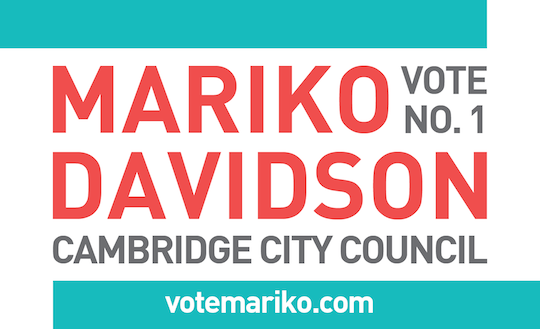
Vote Mariko
Candidate for Cambridge City Council 2015
Vote Mariko: Candidate for Cambridge City Council 2015
In summer of 2015, I took the plunge and ran for Cambridge City Council. Why did I run? Well, as an urban planner working in transportation, housing, technology, and governance, you quickly learn much of those decisions come down to politics. Looking at my community, I saw a council that didn't adequately represent Cambridge. At that time 7 out of 9 councillors accepted as much as 40% of their campaign contributions from special interests, in the midst of an affordable housing crisis. Additionally there was only 1 woman on council out of 9 seats; and to this day, there has never been an Asian American woman elected to council. For these reasons, I decided to step up as a candidate.
It was a crowded field of 23 candidates for 9 seats, all incumbents running for another term. While we didn't win, I'm incredibly proud to report we placed 3rd runner up out of 23 candidates on the ballot, short by 150 (#1) votes out of 17,000 cast. We outran those with tens of thousands of dollars more raised, years more time campaigning, and gave incumbents with political “machines” a run for their money — all with no special interest dollars, no campaign manager, and as one of the leanest campaigns in the race. Most importantly, we helped move the dialogue in Cambridge to one that focuses on leadership accountability, equitable development, campaign finance reform, and real, civic engagement.
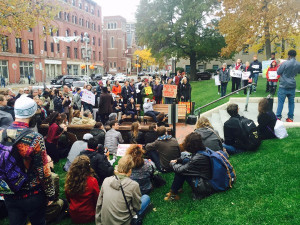 -->
-->

MassData @ data.mass.gov
Commonwealth of Massachusetts Open Data Initiative
The Commonwealth of Massachusetts Open Data Initative
As an Innovation Fellow for the Commonwealth, I was charged with standing up the state's open data program. Today the state has MassData, the first open data platform at http://data.mass.gov.
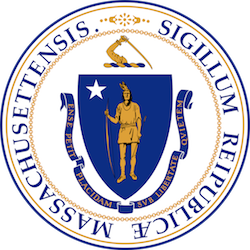 -->
-->

5 Strategies for Open Data @ the State Level
Google's Public Policy Blog
Five ways for states to make the most of open data May 1, 2015 [Text from article]
States should leverage their unique role in government rather than mimic a municipal approach to open data.

They must take a different approach to encourage civic engagement, more efficient government, and innovation. Here are few recommendations based on my time as a fellow:
1. States are a treasure trove of open data. This is still true. When prioritizing what data to publish, focus on the tangible data that impacts the lives of constituents—think aggregating 311 request data from across the state. Mark Headd, former Chief Data Officer for the City of Philadelphia, calls potholes the “gateway drug to civic engagement.”
2. States can open up data sharing with their municipalities—which leads to a conversation on data standards. States can use their unique position to federate and facilitate data sharing with municipalities. This has a few immediate benefits: a) it allows citizens a centralized source to find all levels of data within the state; b) it increases communication between the municipalities and the state; and c) it begins to push a collective dialogue on data standards for better data sharing and usability.
3. States in the US create an open data technology precedent for their towns and municipalities. Intentional or not, the state sets an open data technology standard—so they should leverage this power strategically. When a state selects a technology platform to catalog its data, it incentivizes municipalities and towns within the state to follow its lead. If a state chooses a SaaS solution, it creates a financial barrier to entry for municipalities that want to collaborate. The Federal Government understood this when it moved Data.gov to the open source solution CKAN. Bonus: open source software is free and embodies the free and transparent ethos of the greater open data movement.
4. States can support municipalities and towns by offering open data as a service. This can be an opportunity to provide support to municipalities and towns that might not have the resources to stand up their own open data site.
5. Finally, states can help facilitate an “innovation pipeline” by providing the data infrastructure and regularly connecting key civic technology actors with government leadership. Over the past few years, the civic technology movement experienced a lot of success in cities with groups like Code for America leading the charge with their local Brigade Chapters. After publishing data and providing the open data infrastructure, states must also engage with the super users and data consumers. States should not shy away from these opportunities. More active state engagement is a crucial element still missing in the civic innovation space in order to collectively create sustainable technology solutions for the communities they serve.
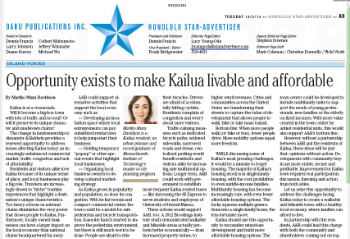
'OPPORTUNITY EXISTS... IN KAILUA'
Op-ed in The Honolulu Star-Advertiser
Opportunity exists to make Kailua livable and affordable December 3, 2013 [Text from article]
Kailua is at a crossroads. Will it become a big box town with lots of traffic and no soul? Or will it preserve its unique character and small town charm?

The change in landownership to Alexander & Baldwin provides a renewed opportunity to address issues impacting Kailua today: an increasingly unbalanced commercial market, traffic congestion, and lack of affordability.
Both residents and visitors love Kailua because of its unique sense of place, and local businesses play a big role. Travelers are increasingly drawn to 'niche' tourism experiences that highlight a destination’s unique characteristics. Too heavy a focus on national chains diminishes the very power that draws people to Kailua. Furthermore, locally owned businesses can have a larger impact on the local economy than national chains headquartered far away.
A&B could support alternative activities that support the local economy such as: developing an incubation space where local entrepreneurs can pay subsidized rental rates to help jump-start their business; holding temporary 'pop-up' or other special events that highlight local businesses; and organizing local business owners to develop a shared marketing strategy..."
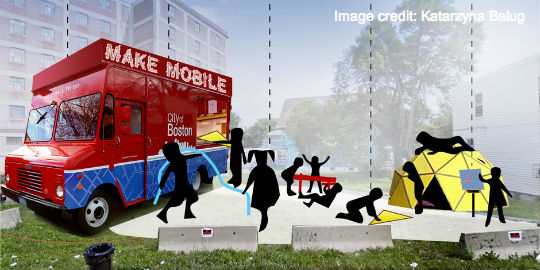
New Participatory Planning in East Boston
Mayor's Office of New Urban Mechanics
As a fellow, I co-developed East Boston Makers + Movers which used Maker tools to help people imagine a bicycle hub of the future in East Boston’s Central Square neighborhood. It was an open Maker and participatory planning event, hosted by the Mayor’s Office of New Urban Mechanics, the Boston Transportation Department, and supported by a grant from The Awesome Foundation.
To attract a new audience that may not typically engage in community events, we used hands-on accessible activities, which took place in English and Spanish. Using low-tech tools (markers, paper, and Legos) and high-tech tools (a vinyl cutter and 3D printer), participants mocked up their own vision for the bicycle signage and orientation for the bicycle hub.

So what happened? Over 100 people joined in on the fun. With the Boston Public Health Commission, we gave out 52 bicycle helmets—mostly to children. We gained 41 bicycle wayfinding design suggestions, and printed out 3 samples on the vinyl cutter. 22 people used the legos to demonstrate their ideas for a bicycle hub’s orientation. Since East Boston does not have a single bicycle repair shop in the area, the public bike repair stand accompanying the bicycle hub will fill a need in the community.

Coding and Maker Technology Workshops for Girls
Mayor's Office of New Urban Mechanics
As a fellow, I co-developed Girls MAKE the City which connected 75 local middle school girls with female role models in the science and technology fields and engaged participants through hands-on activities related to Making, or 21st century innovation.
Mayor Menino declared August 23, 2013 "Girl Power Day."

It continues on today in Mayor Walsh's administration, with the most recent event at the MIT Media Lab with the Lifelong Kindergarten Group, the Mayor's Office of Women's Advancement, the New Urban Mechanics, and Nas(!) the music artist.
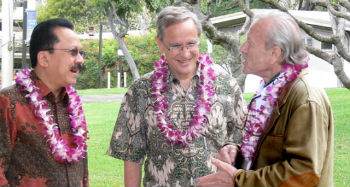
Urban Asia Mayors Dialogue
East-West Center
At the East-West Center, I co-founded the Asia-Pacific-U.S. Urban Dialogue which brings together small groups of mayors, governors, urban planning practitioners, scholars, activists, and private sector representatives from the United States, Asia, and elsewhere.

Launched in 2008, this on-going seminar series facilitates informal, roundtable dialogue to examine the challenges of urban transition and governance using a knowledge-based approach that integrates experience and data. Through peer-to-peer exchanges on policy options, these diverse groups share and reflect on long-term strategic visions for managing urban growth in the region. At the invitation of each cities, we held follow-up workshops in Nepal and Vietnam.
The East-West Center is a non-profit established by Congress in 1960 to better relations between Asia and the U.S. Hawaii was chosen as both the literal and symbolic meeting place to house this institution.
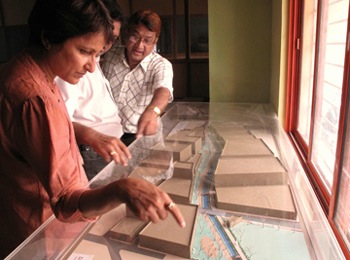
Non-Motorized Transportation Street Design Handbook for Rajkot City Government, India
ITDP, India Bureau
I consulted with the Institute of Transportation and Development Policy (ITDP)— an international non-profit — in Ahmedabad, India on an initiative to increase pedestrian and bicycle access and safety. There I worked on developing a non-motorized transit (NMT) street design guideline handbook for the City of Rajkot, specifically focusing on creating a safer pedestrian network through dedicated infrastructure initiatives.
A city that provides infrastructure supporting non-motorized transit not only promotes environmentally sustainable transit and more transit options for their citizens, but also promotes an equitable means for underserved communities to access city services and their destinations.

For this project, I created a methodology and strategy for project-wide data collection: developed complimentary GIS mapping; ability to transition between data formats; developed a database for continuation of proposal; and formulated the policy language.
My time in India was sponsored by MIT's Public Service Center, and a fellowship from the Aga Khan Program for Islamic Architecture @ MIT.
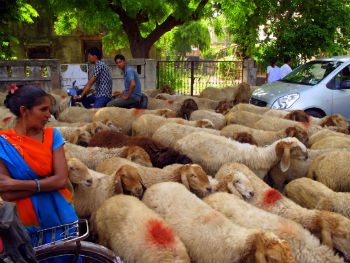
Street Stories India
Art on Bicycling & Social Equity @ MIT Council of the Arts
Everyday men and women working as vendors, head-loaders, cart pushers, domestic servants and waste pickers go out and make their living in India– but do you know their story and what their livelihoods depend on? The common thread uniting their experiences is their dependence on walking or cycling.
Using journalistic photographs and ethnographic interviews to record pedestrian and cyclists’ everyday movements and interactions with the city, STREET STORIES serves to remind the public about the critical link between social equity and transportation.

While this series took place in Ahmedabad, India, much of the challenges and issues these people face are common throughout India.
STREET STORIES was funded by the MIT Council for the Arts and supported by the Self-Employed Women’s Association (SEWA) and the Centre for Urban Equity, Centre for Environmental Planning and Technology (CEPT) University, Ahmedabad, India.
A more detailed article about some of the struggles hawkers face is published on MIT's Colab Radio, "Fighting for Space: Vegetable Hawkers in Ahmedabad."
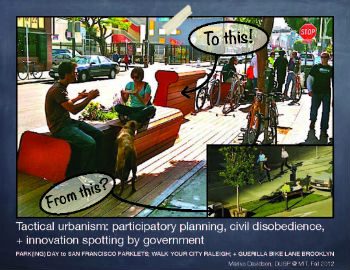
Tactical urbanism, public policy reform, + 'innovation spotting' by government
Master's Thesis @ MIT
My thesis examines the "urban legend" surrounding San Francisco's parklet program, as many assume it is a result of the tactical urbanism (TU) intervention, PARK(ing) Day. I also analyze projects in Dallas, Brooklyn, and Raleigh.

I argue that tactical urbanism is a play on the physical and political landscape, manifested as a design intervention. While interventions play on the two landscapes-- not one--urban tacticians tend to focus primarily on the physical play and miss the opportunities presented by playing off the political and institutional bodies as well. Tacticians that relate their projects to interest groups and government have a better chance to formalize their intervention. Interventions capture these efforts with varying levels of success and sophistication, with each project different in context and texture.
TU poses a host of risks and potential rewards. Like traditional acts of civil disobedience, TU can be very generative, allowing players to pilot projects on a small-scale, minimizing risk and cost. TU can go beyond spotlighting problems to produce solutions. Both are good, I argue, for government and good for would-be innovators in civil society. Yet with rule breaking comes the risk of going beyond civil disobedience and duty into parochial, special-interest agendas and even vigilantism. To minimize that risk, the field needs some rules of the road, as safeguards in the TU playbook. As of now, TU does not have a code. Developing one is a critical next step, both for urban tacticians and planning research.
I presented some of these findings about the risks and rewards of tactical urbanism at the Center for New Urbanism's Tactical Urbanism Salon "This is a Test" at District Hall, Boston.
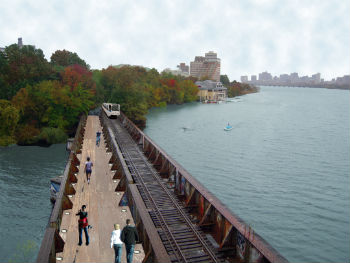
Grand Junction Riverwalk
Urban Design Studio @ MIT
Rehabilitating A Forgotten Relic: Guided by the principle of pedestrian connectivity, the new Grand Junction Riverwalk along the historic railroad bridge links existing parks on the Boston and Cambridge waterfronts.
I produced the images and renderings with Photoshop, Illustrator, InDesign, and Google SketchUp.

Assignment: Propose an infill development in Cambridge, Massachusetts that develops the site to its maximum potential in accordance with its current zoning and urban design guidelines for the city.
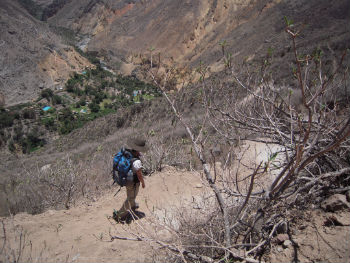
Urbanscapes
Around-the-World Travel Journal
In September 2010, I hit the road with nothing but a small backpack, my surfboard, and my husband, and traveled around the world for 9 months on $25 a day.
Urbanscapes is my online journal documenting my observations about the cities, villages, towns, and communities we visited.
Countries: Costa Rica, Peru, Chile, Argentina, Uruguay, Germany, Morocco, Jordan, Israel, Switzerland, South Africa, India, Indonesia, Thailand, Laos, Cambodia.
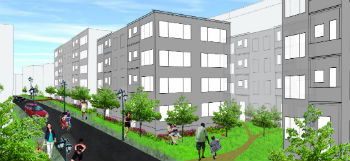
Little Cambridgeport
Urban Design Studio @ MIT
Connecting the neighborhoods of Cambridge to the riverfront with a vibrant community to live, work and play – all just one short bridge away from Boston. To create a new and exciting destination that also serves as a mixed-use hub for neighborhood residents.
I produced the images and renderings with Photoshop, Illustrator, InDesign, and Google SketchUp.

Assignment: Propose an infill development in Cambridge, MA that develops the site to its maximum potential in accordance with its current zoning and urban design guidelines for the city.
